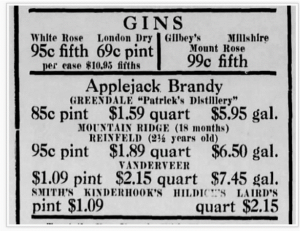Distilling in Central New Jersey
New Jersey has a deep history of distilling spirits that goes back to colonial times. The Somerset Hills is an area in central New Jersey’s Somerset County grouping six similar towns, villages, and hamlets into a cohesive geographical area. Those towns that comprise the Somerset Hills are¬†Bedminster, Bernards Township (Basking Ridge), Bernardsville, Far Hills, Peapack & Gladstone.¬†Being from Basking Ridge, New Jersey there are written accounts that even with the foundation of Bernards Township back in 1760 where¬†commitments were made by the Governor Sir Francis Bernard to supplement King Georges’s coiffeurs with spirits from the colonial area. So distilling was alive and well in the hills in the mid-1700s!
New Jersey Distillers Map
We left this map up so that you can see the expansion of distilling in New Jersey over the past six years. It’s incredible growth.
Distillation Process
First of all, distilling, or distillation¬†(where “still” comes from) is a process. It’s also a science (alchemy, chemistry). Distillation has a long history going back to the 1st Century. Archaeological evidence indicates that the actual distillation of beverages began in the Jin and Southern Song dynasties in China.¬†Aristotle talked about it in his¬†Meteorologica. The bottom line – it’s been going on for a while.
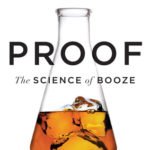
Distillation is “purifying a liquid by heating and cooling separating the component substances from a liquid mixture by selective evaporation and condensation.”¬†Distillation is widely used in industries that refine oil, desalinate water, create liquor, beer, and wine, and produce many chemical products used in homes and factories. We’re going to focus on liquor, the industrial version, not the home version. Alcoholic beverages are produced by distillation of a mixture produced from alcoholic fermentation. Spirit refers to a distilled beverage containing no added sugar and at least 20% alcohol by volume (ABV). Since this is interactive – see what Adam Rogers says about his book PROOF, The Science of Booze:
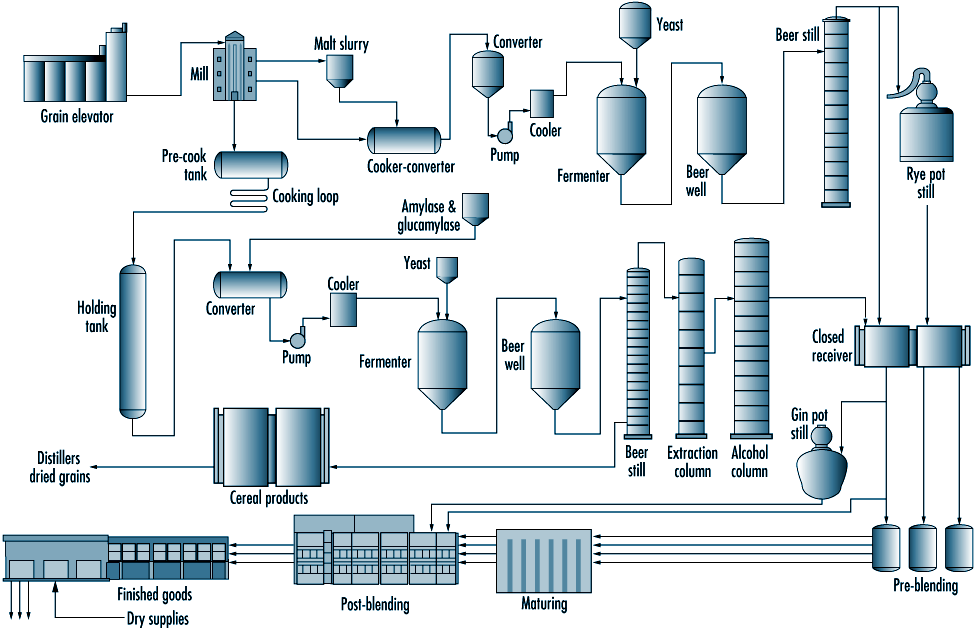
The Prohibition Era
We can’t talk about distilling and spirits in America¬†without talking about the prohibition era (1920-1933). So, we present the History Channel’s overview of the history of Prohibition.
The Changing US Constitution
Prohibition started with the 18th Amendment to the United States Constitution. For history buffs, the one before created the voting of United States Senators by the people of each state (17th Amendment). And the one after, the 19th Amendment, gave women the right to vote (1920). To sum up the 18th Amendment;
“Declared the production, transport, and sale of alcohol illegal (though not the consumption or private possession).
It was ratified on January 16, 1919, and took effect on January 16, 1920.
For 13 years the Prohibition experiment took its toll on America and FDR knew it. It was even part of his platform to repeal the 18th Amendment. But you can’t just “repeal” a constitutional amendment, you need ANOTHER amendment to supersede another amendment. On¬†Dec 5, 1933, at 5:32 pm – ¬†the 21st Amendment was the first amendment ever to repeal another amendment.¬†Michigan was the first to ratify (April 10, 1933),¬†and New Jersey was 5th to ratify (June 1, 1933).
Ok, before we move on, with that last tidbit you gotta be thinking
Has there ever been any other¬†constitutional¬†amendments¬†repealed?”
No, Nada, Never Repealed another one.
New Jersey’s Prohibition Role
Do you know who the President was who signed the prohibition enabling the 18th Amendment? It was none other than the 34th Governor of New Jersey, President Woodrow Wilson. You know, the one who had that great Camp David’ish summer home in Long Branch (now Monmouth University). Yeah, that guy!¬†Take a tour of those digs…
So now you know. Blame Jersey! Well, not really. But it is clear Jersey had and continues to have a role in distilling spirits. Let’s take a look.
Somerset Hills Distilling History
On January 17, 2012, Governor Chris Christie signed into law reducing the annual distilling registration fee from $12,500 to $938, the same fee the state charges for microbreweries. This law also enabled the craft distilling industry to permit New Jersey sales, tastings, and tours.  A year later, in February 2013, the state issued its first distilling license to begin distilling up to 20,000 gallons/year since the prohibition to Jersey Artisan Distilling. The law would also clarify rules covering on-site public sampling, allowing micro-distillers to pour up to three half-ounce samples per person/per day.
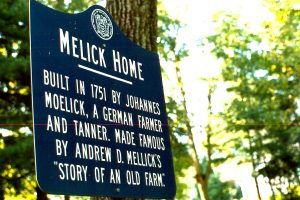
The Somerset Hills area is rich in German, Dutch, and Scottish heritage. A few noted family names held strong to the distilling practice. For both libations and fuel, the names included such locals as the Melicks, Mellicks, Bunns, and others who have been distilling back to the early 1800s. You see, the area was an orchard paradise, namely apples and peaches. Orchards were abundant in the area and used as a key ingredient for distilling alcohol.
Bunns Mill, built by John Bunn in 1844 was the “industrial enterprise in Bernardsville”, according to the Bernardsville News. It ground wheat, rye, buckwheat, flour, and corn and served as the area cider mill and distillery.
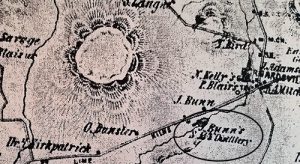
Right on the banks of the Mine Brook River, and just down the road from the Bernards Inn, the Bunn pond was often told where people would get their “bunn on”, a local term meaning they’d come purchase their apple & peach moonshine whiskey and get tanked while sitting by the water.
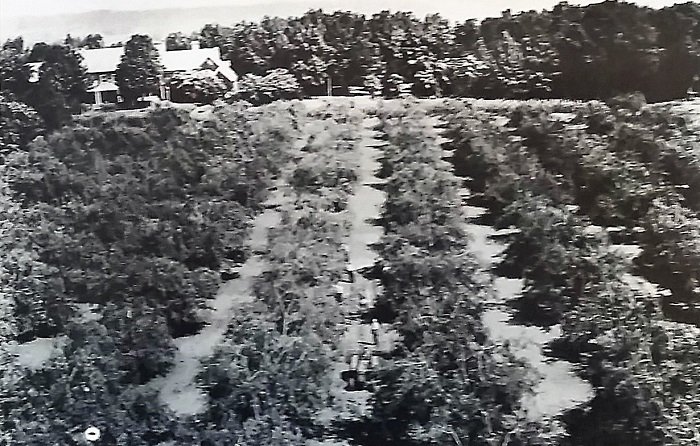
Speakeasy Saloons
The¬†Bernards Inn opened¬†in 1906. ¬†In 1924, Bernardsville residents voted¬†to secede¬†from Bernards Township and strike out on their own as a separate boro. The Bernards Inn became the centerpiece of political action in the boro serving as host to the new town hall from 1924-1932. For 8 years, this once old stable served as the boro hall, police headquarters (and its own jailhouse), a bowling alley, auditorium, post office, theater, and a¬†35-room hotel with¬†tavern. In addition to the Bernards Inn, each of the other hotels along the historic carriage Route 202 from Bedminster to Gladstone trail operated¬†taverns/speakeasies and were all often¬†raided by police.¬†You’d have to figure that having Boro Hall along with those¬†town officials in the same building as a¬†speakeasy would be the best answer to reducing¬†raids.
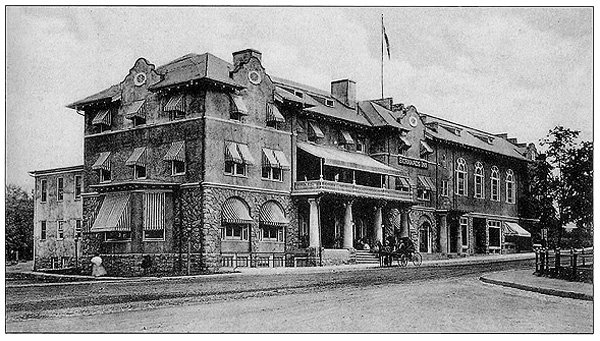
But, on November 18, 1929, federal agents made it into what was presumed¬†to be one of four speakeasies in Bernardsville. Seems that Federal Agents got past the bouncer and purchased what was then illegal spirits. ¬†So they stayed, drank, left, and then came back¬†with padlocks to lock down the establishment. This high profile raid involved Fred E. Stroehmer, the former lessee of the hotel. ¬†It took till June 1931 for a federal judge to throw out the charges stating “the government failed to prove the nuisance continued, a proper description was not given…and no liquor was found at the time of the raid”.
Then, on March 31, 1930, at 10:25 pm a fire broke out at the Bernards Inn consuming about a third of the building. ¬†Destroyed in the fire were the Bernardsville Boro offices and the police headquarters. Three fire companies brought the fire under control by about 3:00 am. ¬†Yet at 6:30 am, it was reported that the fire restarted. It was reported that Charles Pfadenhauer of Bernardsville was being held in a detention room on disorderly conduct “in conjunction with…violating prohibition laws, that had caused the fire.” Mr. Pfadenhauer was later charged with arson, with bail set at $5,000. The rumor was it was distilling (still) that caused the fire.
1933 – Basking Ridge Takes the Prize – A Distilling Factory
There’s a great story of one of New Jersey’s biggest distilling¬†plant busts on Mt. Airy Road in Bernards Township. On¬†May 25, 1933, ¬†just seven days before New Jersey ratified the 21st Amendment to end prohibition(June 1, 1933), Police Chief Louis A. Allen found himself¬†at the Basking Ridge home of Mrs. Celia Kosloff.
Based on complaints¬†of an increasing amount of pollution and dead fish in Harrison Brook, one of the area’s tributaries to the Dead River, Basking Ridge Police Chief Allen and the State’s Game Warden, Joseph Eggert, went to the brook and found its source on the banks of Mt. Airy Road.
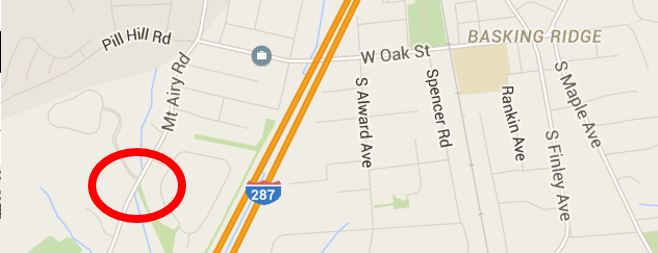
On the property were an operating still, ten vats, 10,000 gallons of mash (fermenting), two high-pressure steam boilers, and a still capable of turning out 1,000 gallons per day. The find came after local farmers complained that their cows were getting sick from drinking the water. The plant was dismantled and handed over to federal authorities, who were fined $250.
Let’s see how big that bust really was. The ad shows¬†the typical prices back in 1936. A fifth (1/5th of a gallon) is similar to today’s 750ml bottle. Figuring 1,00o gallons a day, at 5-fifths, you’d have yourself 5,000-fifths. If it were applejack, you’d talk about almost $6,000/day retail production or $2,190,000 a year based on the stated¬†capacities. In today’s dollars, that’d be a¬†$35.5 million-a-year business.
New Jersey Act No.1464 – The Craft Distillers Act

According to the law, you also need to get 51% of your ingredients from New Jersey and pay a $938 licensing fee for a yearly craft distillery license (or one of three other types of distilling licenses).
Act 1464 was sponsored by Assemblyman Reed Gusciora (Hunterdon and Mercer), Assemblywoman Connie Wagner (Bergen and Passaic), and Assemblyman John Dimaio(Hunterdon, Somerset, and Warren). The American Distilling Institute (TADI) supports the efforts of craft distillers across the country.
New Jersey Craft Distilling Today
Today, due to the diligence of a few key individuals, some Somerset Hills residents are pioneers of the revived craft distilling industry in New Jersey.
Somerset Hills noteworthy’s like Tim Koether of Bernardsville, owner of Claremont Distillery,¬†and Krista Haley co-founder of Jersey Artisan Distillery whose mom lives in Basking Ridge (Bernards Twp) are the three¬†pioneers for craft distilling¬†in New Jersey.¬† It was Krista’s efforts along with co-founder Brant Braue of Jersey Artisan that led to the first legal distillery in New Jersey since prohibition.
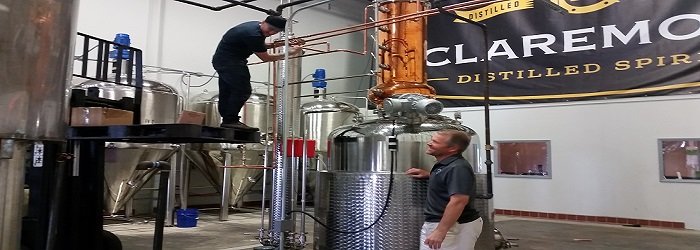
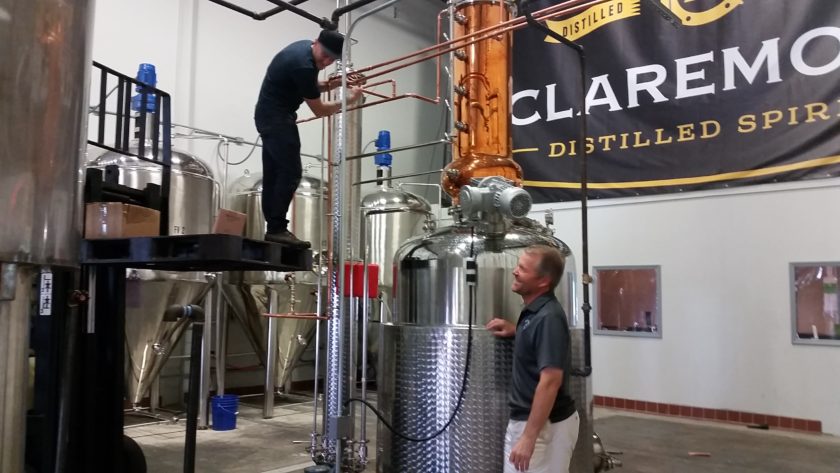
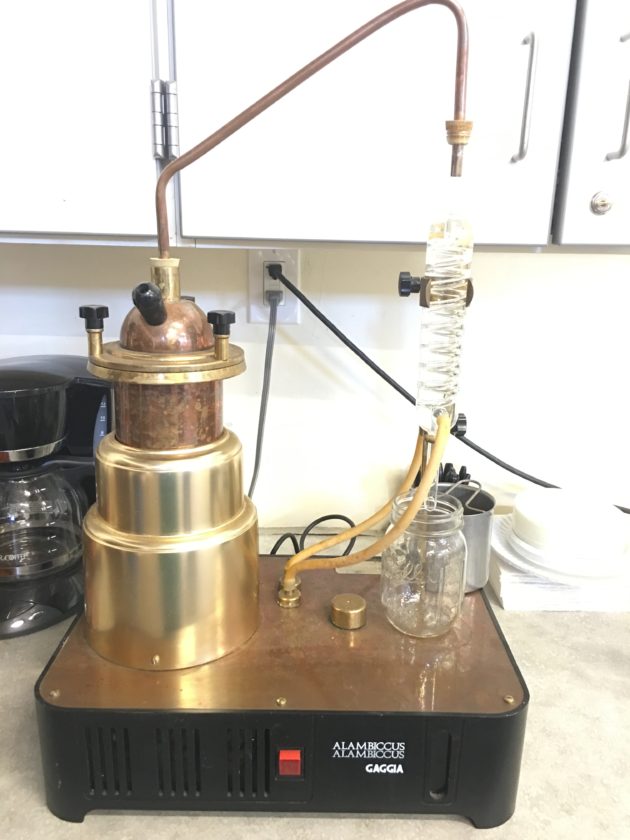
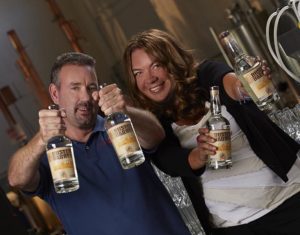
Jersey Artisan and Claremont are two of about six¬†distilleries that are now crafting spirits in New Jersey. While New Jersey’s craft distilling industry is relatively small compared to others in Washington State, Oregon, Colorado, and New York, distilleries are now focusing on local “farm-to-table” organic philosophies.
It’s not by accident that Claremont, Jersey Artisan, and Jersey Spirits distillers are all¬†based in Fairfield, New Jersey.¬†Because of New Jersey law, distilling is a chemical activity, and must be located typically in a zoned chemical area. But that might be changing. Like wineries, who like to “present” products alongside¬†their vineyards, some craft distillers also want farming locations¬†where they can grow their ingredients locally and get¬†away from the industrial warehouse look. After a long application process, Jersey Artisan on February 7, 2013, was granted New Jersey’s first distilling license since the prohibition ended in 1933. With their efforts, others followed.
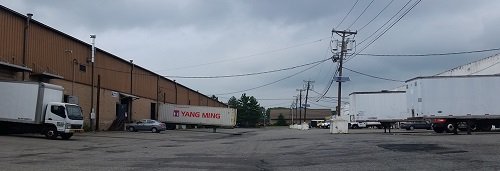
Jersey Artisan’s claim to fame is their Busted Barrel light and dark rums and a new Morena rum. They also produce a new Whiskey called James F.C. Hyde Sorgho Whiskey. Other products are in the works.
Claremont Distilled Spirits produces vodka (potato, peach, blueberry), moonshine, and eventually whiskey. Their “Claim to Fame” is their¬†vodka, the only product produced in the state to win a gold medal at the SF World Spirits competition, the preeminent spirits competition in the world. ¬†It also received a 93-point rating from Wine Enthusiast eclipsing Tito’s, Grey Goose, Kettel One, Stolichnaya, and Absolute.¬†Another big one¬†is an¬†un-oaked whiskey, more familiarly known as Moonshine, which is an 80% proof spirit distilled from local corn. Just like vodka, whiskey comes off the still at 155% proof before being‚Äúpolished down‚ÄĚ to its double-distilled drinkable ABV. The ‚ÄúJersey Devil Flaming Cinnamon‚ÄĚ Moonshine refers to Pine Barrens’ legend of the Jersey Devil, a mythical creature imbued with its own notoriety. As far as Claremont’s next distilling product, they plan to start their¬†first bourbon distillation this week. ¬†Claremont Distilled Spirits plans to do¬†a number of different bourbons and whiskies.¬†“Our goal, Koether, “is to ultimately have a facility that is both a destination and a provider of many of our ingredients. We are all about New Jersey and want to integrate as much of the Garden State’s agriculture as much as possible.” When asked what Tim’s credo is, he replied¬†“You have got to take chances to do something great”. We agree! So Tim’s vision includes a move to hopefully Hunterdon County in the future.
Summing Up
In 1834, there were over 838 distilleries in New Jersey. Lairds of Colts Neck was the biggest producer of Applejack in the country (now it’s the only one). Laird & Company no longer distills in New Jersey, but it is licensed to mix. Where’s Jersey going to be in the future regarding craft distilling? The future does look bright or blurry, depending on how much of these spirits you take in!
Additional History and Modern Distilling in New Jersey
- Jersey Artisan Distillery
- Claremont Distillery
- The American Distilling Institute
- History in the Somerset Hills
- Our Distilling in NJ Map (see below)
New Jersey Distillers 2022
Watch “The Science of Booze” talk at Google with Author Adam Rogers. Funny how he sounds like a scientist, but he’s just a writer.

